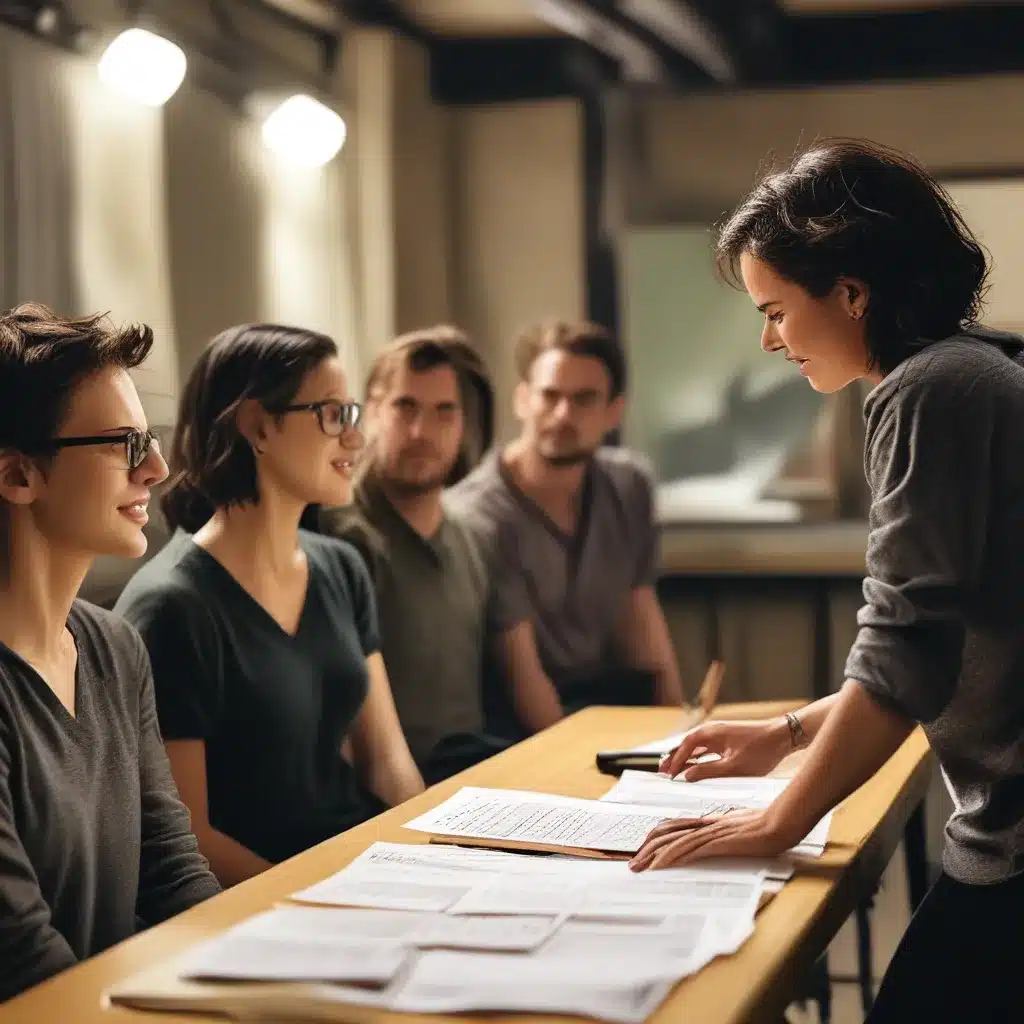
Unleashing the Power of Ensemble
As the director of the Musical Theater Center, I’ve always believed that the secret to unlocking true creative potential lies in fostering a collaborative environment. After all, the art of musical theater is a symphony of talents – from the writers and composers to the actors and designers. And just like a real symphony, the beauty emerges when everyone works in harmony.
This is why, at the Musical Theater Center, we’ve made it our mission to create a rehearsal process that empowers our directors to cultivate a culture of collaborative creativity. It’s not always easy, but the rewards are immeasurable. Let me share with you some of the key strategies we’ve learned along the way.
Embrace the “Yes, And” Mindset
In the world of improv comedy, there’s a golden rule: “Yes, and.” This simple concept holds the key to unlocking the true power of collaboration. It means that instead of shooting down an idea, you build upon it, adding your own unique spin.
As the folks at Rolling Stone Culture Council explain, this “yes, and” approach is essential for fostering a collaborative work environment. When people feel their ideas are respected and valued, they’re more likely to take creative risks and contribute freely.
I’ve seen this play out time and time again in our rehearsal rooms. By cultivating a culture where everyone feels safe to share their thoughts, no matter how “out there” they may seem, our directors are able to tap into a wellspring of innovative solutions. What starts as a simple suggestion can blossom into a stunning theatrical moment that leaves audiences in awe.
Tear Down Those Silos
One of the biggest enemies of collaboration is the dreaded silo mentality. When teams work in isolation, with limited communication and a sense of competition, creativity suffers.
But at the Musical Theater Center, we’ve made a concerted effort to break down those barriers. As the Rolling Stone Culture Council suggests, we’ve made a point of intermixing our teams, encouraging cross-pollination of ideas and a sense of shared purpose.
Our directors don’t just work with their actors; they actively seek input from our choreographers, designers, and even the technical crew. And we make sure that everyone has a seat at the table, regardless of their role or department. After all, you never know when the lighting designer might have the spark of inspiration that takes the whole production to the next level.
Mentor, Don’t Micromanage
As a director, it can be tempting to want to control every aspect of the rehearsal process. But the truth is, the more you try to micromanage, the more you stifle the creative potential of your team.
Instead, we encourage our directors to embrace the role of mentor. As the Rolling Stone Culture Council points out, this doesn’t have to be a one-on-one relationship. By opening up opportunities for anyone on the team to participate in a wider range of projects, you’re cultivating a sense of ownership and investment.
I remember one of our past productions where the director noticed a young stage manager who had a knack for creative problem-solving. Rather than keeping her confined to her typical duties, the director invited her to sit in on the design meetings and even contribute ideas. Needless to say, that stage manager went on to become one of our most valuable collaborators, and the production was all the better for it.
Structure for Success
Now, I know what you’re thinking: “But won’t all this collaboration and creative freedom lead to chaos?” And it’s a valid concern. After all, as the Rolling Stone Culture Council points out, even the most creative endeavors need a bit of structure to keep things on track.
That’s why we work closely with our directors to establish clear processes and expectations from the outset. We make sure everyone knows their roles and responsibilities, and we set realistic deadlines and deliverables. This allows the team to focus their energy on the creative problem-solving, without getting bogged down in logistical headaches.
But here’s the key: we don’t let the structure stifle the creativity. We encourage our directors to build in moments of flexibility, where the team can truly explore and experiment. And we make sure that the feedback and approval systems are streamlined, so that the creative flow isn’t interrupted by endless rounds of revisions.
Cultivating Connections
At the end of the day, all of these strategies boil down to one fundamental truth: as the Harvard Business Review article on building collaborative teams points out, the key to unlocking creative potential lies in cultivating genuine connections and relationships between the members of the team.
That’s why we place such a strong emphasis on team-building activities, both in-person and virtual. Whether it’s a lively trivia night or a weekend retreat, we know that the more our directors and their teams get to know each other on a personal level, the more they’ll be able to trust, support, and inspire one another.
And let me tell you, the results speak for themselves. When a group of artists who may have never worked together before can come together and create something truly magical, it’s a testament to the power of collaboration. It’s the kind of thing that keeps me coming back to the Musical Theater Center day after day, eager to see what new heights our directors and their teams will reach.
So if you’re a director looking to take your rehearsal process to the next level, I encourage you to embrace the strategies we’ve perfected here at the Musical Theater Center. Trust me, your cast and crew will thank you – and so will your audiences.

